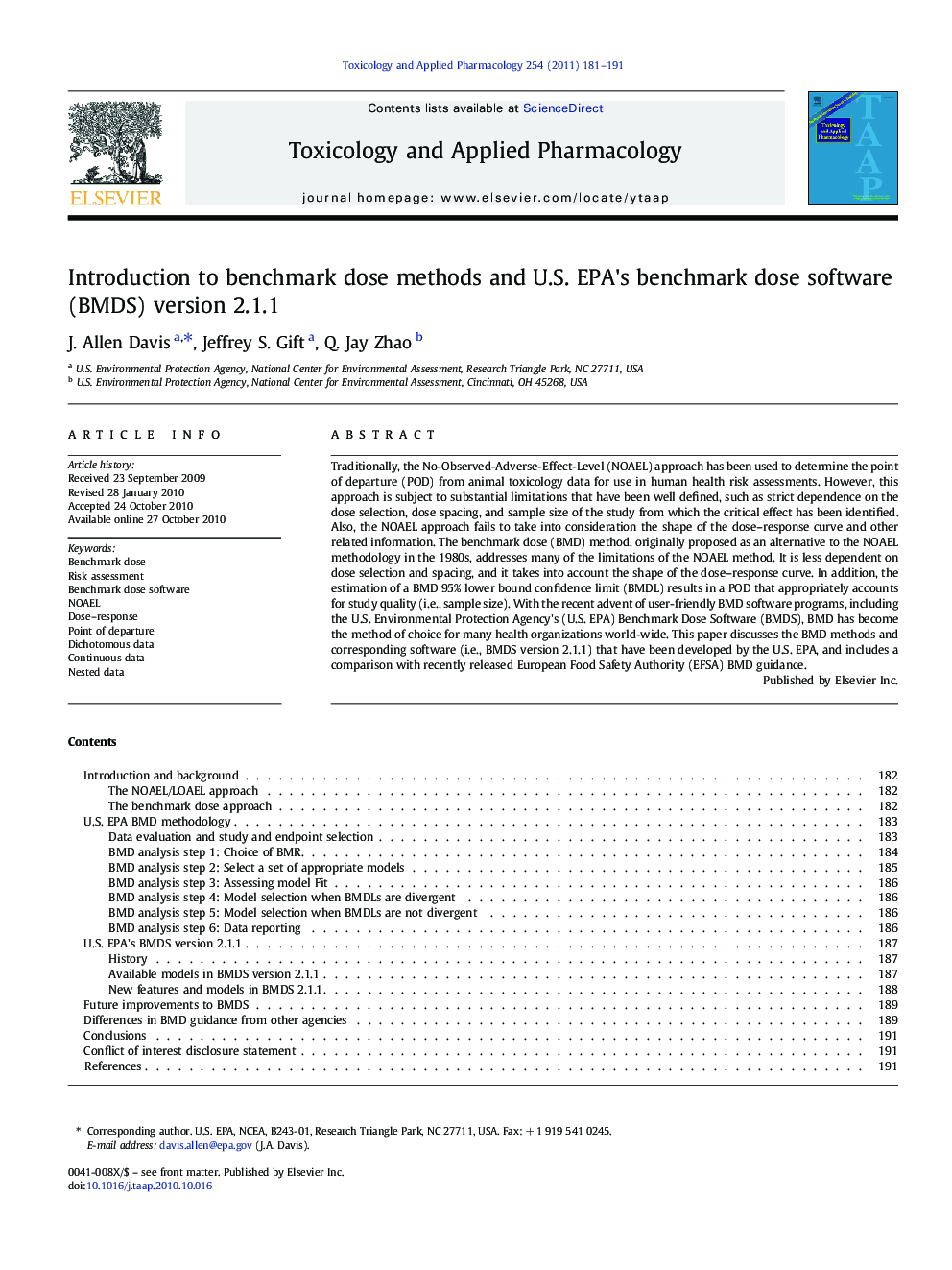| کد مقاله | کد نشریه | سال انتشار | مقاله انگلیسی | نسخه تمام متن |
|---|---|---|---|---|
| 2569438 | 1128530 | 2011 | 11 صفحه PDF | دانلود رایگان |

Traditionally, the No-Observed-Adverse-Effect-Level (NOAEL) approach has been used to determine the point of departure (POD) from animal toxicology data for use in human health risk assessments. However, this approach is subject to substantial limitations that have been well defined, such as strict dependence on the dose selection, dose spacing, and sample size of the study from which the critical effect has been identified. Also, the NOAEL approach fails to take into consideration the shape of the dose–response curve and other related information. The benchmark dose (BMD) method, originally proposed as an alternative to the NOAEL methodology in the 1980s, addresses many of the limitations of the NOAEL method. It is less dependent on dose selection and spacing, and it takes into account the shape of the dose–response curve. In addition, the estimation of a BMD 95% lower bound confidence limit (BMDL) results in a POD that appropriately accounts for study quality (i.e., sample size). With the recent advent of user-friendly BMD software programs, including the U.S. Environmental Protection Agency's (U.S. EPA) Benchmark Dose Software (BMDS), BMD has become the method of choice for many health organizations world-wide. This paper discusses the BMD methods and corresponding software (i.e., BMDS version 2.1.1) that have been developed by the U.S. EPA, and includes a comparison with recently released European Food Safety Authority (EFSA) BMD guidance.
Journal: Toxicology and Applied Pharmacology - Volume 254, Issue 2, 15 July 2011, Pages 181–191